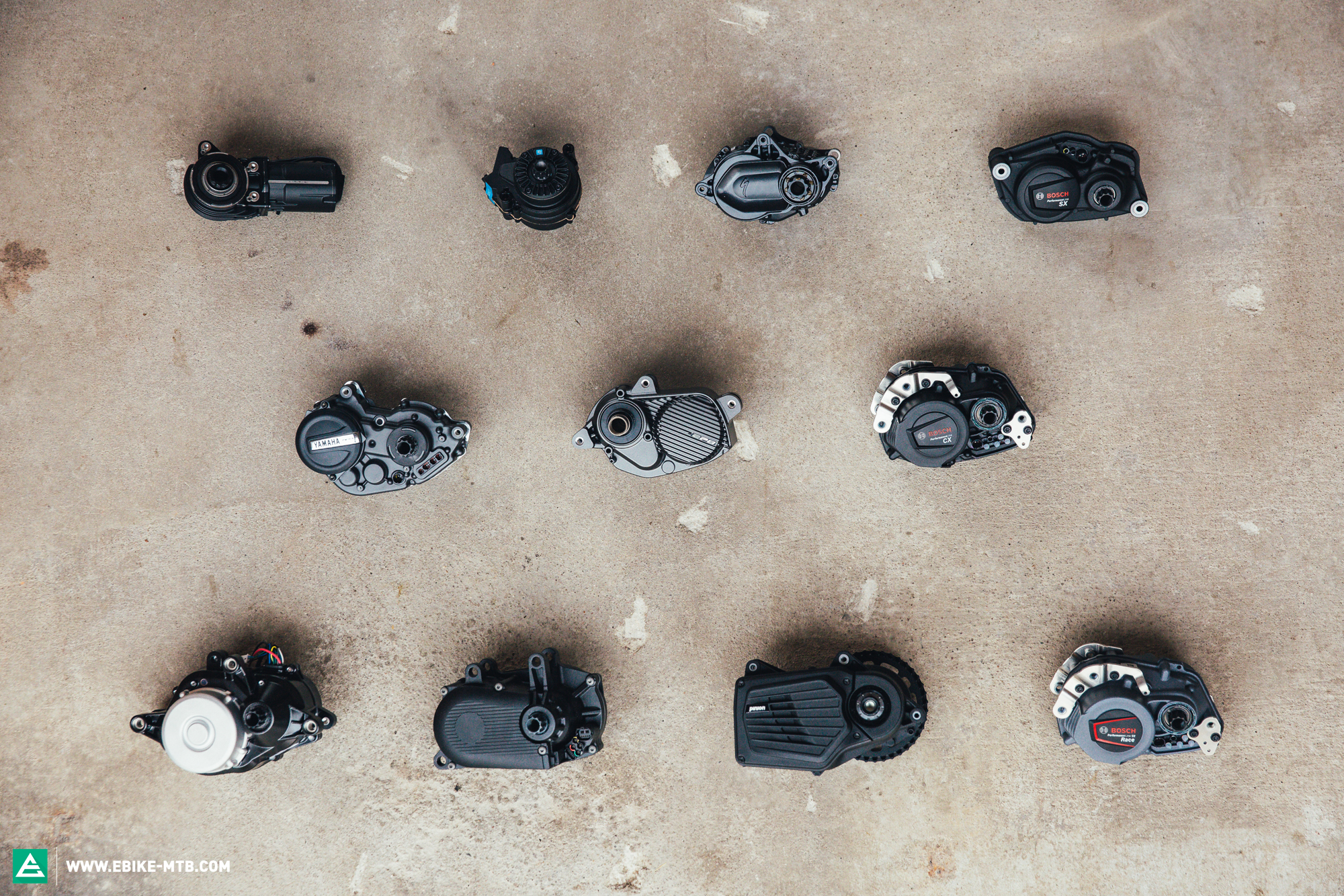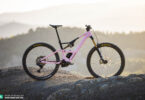As one of the world’s biggest bicycle manufacturers, GIANT offer a huge range of ebike models, most of which have GIANT branded motors. However, the motors are manufactured by Yamaha, while the Taiwanese bike manufacturer add the finishing touches with some in-house solutions. Find out how the GIANT SyncDrive Pro 2 motor fared in our 2023 e-drive group test.
This review forms part of our big ebike motor comparison test. Here you’ll find an overview of all 13 motors in review, along with lots of exciting background information, and helpful buying advice for your next purchase!

If you ride e-bikes and you’ve never heard of GIANT, you must be living on a different planet. Not only is the Taiwanese brand one of the biggest bicycle manufacturers in the world, but also relies on their own motor system for most of their ebikes. Based on the Yamaha PW-X3 motor, the GIANT SyncDrive Pro 2 was introduced in 2021 and is also featured in our big e-motor comparison test. GIANT have been working in close cooperation with Yamaha for many years, designing and developing the SyncDrive motors – a bit like Specialized’s collaboration with Brose and MAHLE. That said, GIANT don’t put quite as much effort as Specialized into motor hardware development, limiting themselves to providing the motor software and peripheral components such as the remotes, batteries and displays – and they also have their own app. The GIANT SyncDrive Pro 2 is used exclusively with eMTBs, E-SUVs and trekking bikes, including the GIANT Trance X Advanced E+, which competed against 29 of the hottest eMTBs of the year in our huge 2023 eMTB group test.

The GIANT SyncDrive Pro 2 ebike motor in detail – In-house power?
Despite the GIANT branding on the motor housing, the SyncDrive Pro 2 can’t hide its origins. Not only does it look a lot like the motor it’s based on, the Yamaha PW-X3, but also delivers the same 85 Nm of torque and 400% assistance in the strongest support mode. Effectively, this means that if you generate 100 watts under your own steam, the motor generates 400 watts of assistance. At 2.75 kg, it’s one of the lighter motors in the test field, on a par with the Yamaha PW-X3 and Bosch Performance Line CX Race.
For the motor hardware, GIANT rely on their in-house components instead of Yamaha’s – not that the Japanese company have much choice to offer anyway. GIANT offer several battery options, including the small 400 Wh EnergyPak Smart, which comes standard with GIANT’s light eMTB, the Trance X Advanced E+ Elite, as well as three more version of the EnergyPak Smart with 500 Wh, 625 Wh and 750 Wh capacity respectively. Recently, GIANT also introduced the 800 Wh EnergyPak Smart 800 powerhouse, which consists of 22,700 round cells instead of the conventional 21,700, cramming 50 Wh more capacity than its predecessor into a comparable form factor. For epic backcountry expeditions, GIANT also offer the 250 Wh EnergyPak Plus range extender, which attaches to the down tube using a bottle cage adapter and expands the total battery capacity to an impressive 1,050 Wh when used in conjunction with the EnergyPak Smart 800.
Embedded in the top tube, you’ll find the GIANT RideControl Go display. Like the Bosch System Controller, it shows the battery charge status and selected riding mode via LEDs. The motor system can be controlled via the discreet GIANT RideControl Ergo 3 remote, which offers excellent haptic feedback and is easy and intuitive to operate with your thumb, without your hand cramping up. This minimalist display/remote combo is an excellent choice especially for sporty eMTBs.


Data nerds who want to have more information while riding can upgrade to the GIANT RideControl Dash – a remote with integrated display – or even the RideDash Evo display, which enables navigation in connection with the RideControl app. However, these are only compatible with bikes that come equipped with GIANT’s Smart Gateway radio interface – like the GIANT Stormguard – which was introduced in 2021. In combination with GIANT’s optional mount, or their adjustable stem with integrated display mount, you can integrate the displays nicely into the cockpit to prevent them from getting damaged in the event of a crash – which is the problem of exposed display mounts from suppliers like FIT.

GIANT also rely on their in-house resources when it comes to connectivity. For the SyncDrive Pro 2 motor, the Taiwanese manufacturer developed their own app called GIANT RideControl, which allows you to adjust the support levels within a certain range, so that a difference to the other support levels always remains noticeable. Unfortunately, the app doesn’t explain the effects the changes have on the riding experience, leaving beginners in the dark as to whether their changes will have the desired effect. The app also allows you to plan routes, which can be displayed on either a RideDash Evo or a smartphone. When changing support modes, the display also shows the estimated range.


The GIANT SyncDrive Pro 2 motor system in review – straight to the point
The SyncDrive Pro 2 offers five support modes – Eco, Basic, Active, Sport and Power – which all have very distinct characters – and the dynamic Smart Assist mode. In the strongest Power mode, the motor delivers its power directly, allowing you to resume your climb even after stopping on a very steep ramp. The motor packs a punch even at low cadences, jolting forward abruptly in the strongest Power mode with the default setting. Unlike with the Yamaha PW-X3, with the GIANT SyncDrive Pro 2 you can tame the boisterous character using GIANT’s RideControl app to make its power manageable even for less experienced riders. Overall, the SyncDrive Pro 2 is significantly stronger than the Shimano EP801, churning out the same amount of power as the motor it’s based on – the Yamaha PW-X3. That said, it can’t keep up with the direct power delivery of the Bosch Performance CX Race motor.


With the GIANT SyncDrive Pro 2 motor, switching to the dynamic Smart Assist mode is more straight-forward than with the Yamaha PW-X3, which is mainly due to the GIANT’s intuitive remote. This mode changes not only the perceived assistance, but the entire character of the motor, which goes from direct and responsive to discreet and reserved. Simply put, the motor is significantly more hesitant, waiting a smidge longer to deliver its power than other motors in a comparable mode – like Bosch’s eMTB mode, for example. As a result, when you pedal hard, the motor has more power left in reserve to boost your acceleration. The downside: when setting off from a standstill in Smart Assist mode, the motor lacks power on steep gradients, so we preferred tackling technical uphills in Power mode. GIANT are living proof that a motor is only as good as the bike it’s part of. Their latest generation of eMTBs deliver a rather unbalanced ride, with the low front end significantly limiting the range of applications of bikes like the GIANT Trance X Advanced E+ LTD. That said, the powerful motor matches the bike’s excellent climbing qualities.
Our conclusions about the GIANT SyncDrive Pro 2
With the SyncDrive Pro 2, GIANT offer an in-house motor system that in some regards performs significantly better than the drive it’s based on, the Yamaha PW-X3. The GIANT SyncDrive Pro 2 packs a punch but requires an experienced rider to control the direct power delivery. Although the displays and remotes only provide a limited amount of information, they’re intuitive to use, and at the same time enable seamless integration. The GIANT motor also offers far better integration and connectivity than the Yamaha system it is derived from, but it still falls behind the best motors on test in this regard.
Tops
- Direct power delivery packs a punch when setting off from a standstill
- Closed system finely tuned to GIANT’s bikes
Flops
- Power mode feels abrupt and could be overwhelming for beginners
For more info, visit giant-bicycles.com
The test field
For an overview of our big ebike motor comparison test click here
All ebike motors in test: Bosch Performance Line CX (Click for review) | Bosch Performance Line CX Race (Click for review) | Bosch Performance Line SX (Click for review) | Brose Drive S Mag (Click for review) | FAZUA Ride 60 (Click for review) | GIANT SyncDrive Pro2 | Panasonic GX Ultimate (Click for review) | Pinion MGU E1.12 (Click for review) | Shimano EP801 (Click for review) | Specialized SL 1.2 (Click for review) | Specialized 2.2 (Click for review) | TQ HPR 50 | Yamaha PW-X3 (Click for review)

Did you enjoy this article? If so, we would be stoked if you decide to support us with a monthly contribution. By becoming a supporter of E-MOUNTAINBIKE, you will help secure a sustainable future for high-quality cycling journalism. Click here to learn more.
Words: Mike Hunger Photos: Various









